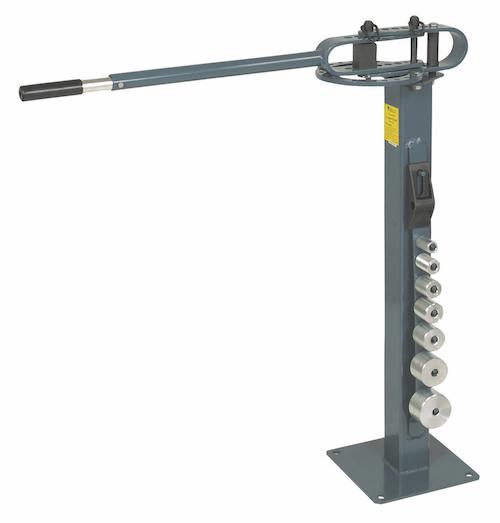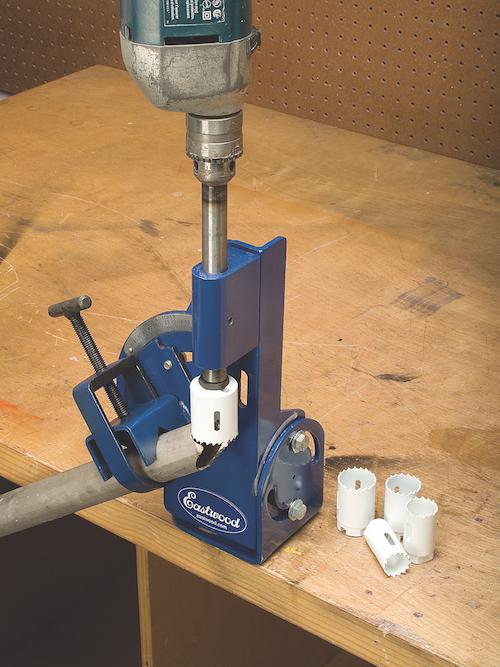Wait, is that a chopped mid engine rwd HHR?


Photography Credit: Tom Suddard
[Editor's note: This article originally ran in the June 2010 issue of Grassroots Motorsports.]
Story by Liz Miles
Looking to build a car from the ground up? Finally ready to take the plunge and turn your own ideas into a four-wheeled creation? While every great car contains equal parts sweat and inspiration, you’ll also need something to help with the design, fabrication and actual assembly process. In addition to a dollar and a dream, a couple of well-chosen tools will help turn those automotive wishes into reality.

First things first: You’ll need to get an understanding of how a car’s suspension works. This sounds elementary, but even well-studied auto enthusiasts have holes in their knowledge base. Some reading can easily fill them.
There are thousands of books on the subject of suspension and chassis design, and most specialize in one type of car. The ones that cover a little bit of everything can also be helpful for the novice, since they show how the whole system works. “Chassis Engineering” by Herb Adams is a great place to start. Once equipped with basic suspension design knowledge, you’ll be ready to move forward with your project.

Image courtesy Performance Trends
Building a car will always involve adhering to a budget, and the last thing you want to do is throw away money on bad ideas. A suspension analyzing program can help you get that part of the project right the first time.
First, input the dimensions of the hard parts that you’d like to use. Then, use the program to build the rest of the suspension. The virtual design can be put through a series of driving simulations to see how it performs. Not happy? Changes can be made quickly without spending any money for new parts. Performance Trends is a good place to find such software.

Photograph courtesy Milwaukee Electric
With racing comes wrecking—it’s just part of the risk we take when we crawl behind the wheel. To protect yourself and also strengthen your car's structure, you’ll need to build a cage out of metal. The first step: Cut up some tubes.
There are dozens of methods for cutting metal, but compared to a decent band saw and blade, a chop saw is a faster and less expensive way to get the job done. A chop saw can also easily cut at an angle thanks to an adjustable clamp.

Image courtesy Autodesk
Measuring twice and cutting once is a useless practice if you’re starting with bad information. Fortunately, computer software isn’t limited to suspension analysis, as it can be used to design the rest of the car, too.
AutoSketch, from the makers of the popular AutoCAD program, is a 2D design program that’s made to accommodate projects ranging from small mechanical parts to entire office buildings. For car builders, AutoSketch can be used to draft a frame using the reference points provided by the suspension design software.
While AutoSketch is still available for purchase, the company behind the program has recently introduced the AutoCAD Freestyle drafting and sketching software. Download a free technology preview for a limited time at autodesk.com.

Photograph courtesy Harbor Freight
If you’re building a full frame or even a simple roll cage, you’ll have a lot of tubes to direct. Fortunately, metalworking is not like woodworking—you can manipulate the shape of a piece of metal with very few limitations.
When working with chassis tubing, the most useful manipulator is the tubing bender. These come in two basic formats: manual and electrical/hydraulic. The manual units bend a couple degrees at a time, while the hydraulic versions can pull a 180-degree bend in seconds. For the home bender, the mechanical option serves the purpose just fine but is slightly more time-consuming.

Photograph courtesy Eastwood
To properly join two pieces of round tubing, you’re going to need a tubing notcher. There are ways around using one, but it’s hard to beat a tubing notcher’s cost and efficiency. It’s simply a jig that allows you to cut the end of a tube so it can properly butt up against another tube. Fitted at the top of the jig is a hole saw that can be spun by either a 1/2-inch portable drill or a drill press.

Let’s face it, JB Weld isn’t always a permanent solution for mending metal. When grown-ups build cars, they use something stronger and more reliable for these jobs—like a welder. There are two types of welders commonly found in fabrication shops: TIG and MIG welders.
In a nutshell, a TIG welder uses a torch whose amperage is controlled by a pedal. The added metal comes from a thin rod that’s dipped into the hot puddle formed by the torch. It’s the Cadillac of metal bonding devices.
A simpler option is the MIG welder, which works much like a hot glue gun. A metal wire is driven out of the torch’s end; this wire is packed with electricity that’s just itching to arc onto the grounded metal. When it does, it melts together both the base metal and the filler wire.
The MIG welder is much less expensive than its cousin. Plus, if used correctly, it can cover everything from cage tubing to sheet metal welding—as long as it’s steel. Aluminum MIG welders exist, but they tend to be pricey.

Photograph courtesy Eastwood
A sheet metal brake’s purpose in life is to create a simple bend in sheet metal, usually with a very small radius. This tool is most useful for building body panels, but it’s helpful for many other sheet metal projects.
Like most of the tools on this list, brakes come in different flavors. The most flexible variety is the finger brake. This one is composed of several die sections—also known as fingers—that are easily positioned and removed to fit whatever project is at hand.
These dies bolt to a fixture that clamps down on the sheet metal. A pull of a lever bends the metal up to the dies. This is great for creating flanges or boxes.

Photograph courtesy Harbor Freight
This is another tool aimed at the body fabricator. Welded-together body panels aren’t always practical; one small on-track incident can result in yards of damaged sheet metal, and that means lengthy repairs. A series of riveted-together body panels, on the other hand, can help contain damage and also allow for quicker repairs.
The manual rivet gun can tackle small jobs, but using one to join dozens of panels is a sure recipe for carpal tunnel syndrome. Our solution: Get a pneumatic rivet gun. Hey, isn’t everything better when it’s air-powered?

Photography credit: Liz Miles
We’ve all heard that the frame of a car is like the foundation of a house: Mess up the frame, and the house will always be off kilter. Frame benches are platforms used to provide a true, perfectly level surface for chassis building. The garage floor, as level as it may look, cannot be trusted.
A basic frame bench features an I-beam base that’s suspended off the ground by vertical uprights. The uprights are usually adjustable to compensate for an uneven floor. Steel-topped benches are available, but they tend to be both heavy and pricey. They’re also rather permanent and can’t be broken down between frame builds.
In reply to Patrick (Forum Supporter) :
yep
https://www.autoblog.com/2006/08/15/gm-cars-set-records-crash-at-bonneville-speed-week/
crashed north of 240mph, but had a RWD ecotec making 800-1000hp
I'm going to strongly disagree with the tubing notcher and pneumatic rivet gun. How can you have an article with "must have" tools and then say "yeah, other tools can do the same thing but this one makes it easier".
Plus I once saw Andrew nelson make perfect tube notches in a parking lot with an angle grinder on a 100ft extension cord.
Of the ten "must haves" listed I have four, and I'm building a car...............shows how naive I am.......![]()
11. a healthy credit card (Hot rod math "...when estimating the cost of a project, double your estimate, add 10% and you're halfway there")
12. lots of space, if you only have a 2 car garage that you share with other uses and you have to move everything around every time you want to work on projects it makes setup, cleanup, etc. 1/2 of your day which in effect doubles the amount of effort required to complete the project.
MadScientistMatt said:Since that name stood for Heritage High Roof, it may just be an H at this point.
...High?
In reply to ClearWaterMS :
The funny thing is, while your points are extremely valid, the reality of the situation, at least for me, has proven quite flexible. Bigger budget lended itself to moving goal posts for me, and "hey we have space for one more car in the garage" led to, surprise, another car.
First world problems, absolutely, but it does make me chuckle a bit, knowing where I started this journey with cars. =)
Displaying 1-10 of 16 commentsView all comments on the GRM forums
You'll need to log in to post.